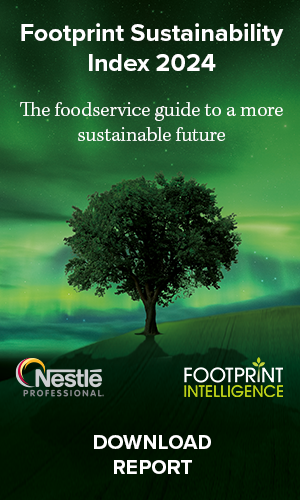New guidance on making environmental claims shows how easy it is to fall foul of the law. David Burrows reports.
Be careful what you claim because the greenwashing police are coming. At least that’s according to lawyers. They would say that, of course, but they have a point. In the UK, as well as Europe, regulators have seemingly caught wind of a problem with misleading marketing that is accelerating thanks to public, political and investor interest in everything from climate change to single-use packaging.
The Advertising Standards Authority (ASA), for instance, has made environmental claims a key strategic focus for 2021. The watchdog has noted a “bewildering array” of claims and they are “increasing in number”. It might even proactively go after some brands it thinks are greenwashing. A new “climate change and the environment project” will also be “taking stock of how effective our rules are in governing environmental claims”. Guidance will be updated accordingly.
The Competition and Markets Authority (CMA), meanwhile, is already consulting on its draft guidance for making environmental claims (the consultation closes on July 16th). Having conducted a literature review on greenwashing, the authority reckons that more than half of UK consumers are thinking about the environment when they buy a product. However, of the 495 websites it checked recently, 40% “appeared to be using tactics that could be considered misleading and therefore potentially breaking consumer law”.
The new guidance is designed to tighten things up. “We’re concerned that people are paying extra for so-called ‘eco-friendly’ products and those businesses which are genuinely investing in going green aren’t getting the recognition they deserve,” says CMA chief executive Andrea Coscelli.
Indeed, greenwashing does more than hoodwink unknowing diners or drinkers – it also annoys the hell out of those businesses making an effort to check their claims. As a coffee roaster told me recently: it takes a lot of time, patience and humility to deliver a sustainable product, but in the end someone else might just “bluff it, put something on the front of a bag and wind up with a sale anyway”.
So, will the new guidance help?
The 46-page document can be boiled down into six principles (a to f) that any environmental claims should follow. They:
- must be truthful and accurate;
- must be clear and unambiguous;
- must not omit or hide important information;
- must only make fair and meaningful comparisons;
- must consider the full life cycle of the product; and
- must be substantiated.
It’s not rocket science but the examples littered throughout show just how easy it can be to fall foul of the rules. One (page 34), for instance, uses the example of a fictional restaurant that has recently updated its branding with the slogan ‘working to reduce waste’. This takeaway has switched from plastic to paper containers and pledged to cut food waste by 50% by the end of the year. The packaging has a ‘commonly recognised symbol for recycling’ and there are even QR codes on the containers so customers can see how the paper is sourced and how it meets a specific environmental standard. An example of best practice, right? Wrong.
In this hypothetical example, market restrictions had been introduced that prevented the supply of those single-use plastic containers anyway. The marketing therefore led the consumer to believe the change in materials was not standard practice and presented an environmental benefit over the competition – which is contrary to principles a) and d). The lining on the containers also means it can’t be recycled in UK facilities, so another black mark (against principle a)).
And there’s more. That food waste target is also a fudge given that no data are being gathered to determine if it has been met, which falls foul of principle b). Principles a) and e) are also ignored with a full life cycle assessment ‘overlooked’.
So what can we learn from this? Well, for a start we can expect to see what Katrina Anderson, senior associate at law firm Osborne Clark, calls a “tightening” of claims. So out go phrases like ‘environmentally friendly, ‘eco’ and ‘green’, for example, because the guidance says that to make such a claim you will have looked at every stage of the product or service and be confident that there is no adverse environmental impact. “It’s a very high standard,” says Anderson. “It’s going to be very, very tough to make those kinds of claims.”
Another key change is that this guidance spans all commercial communications across all channels. So packaging, point-of-sale, consumer advertising and business-to-business marketing. The CMA’s document broadly endorses the principles of the existing advertising guidance but brings a higher standard to claims made on packaging or point-of-sale materials. The CMA is completely agnostic about where these claims appear.
Mistaken menu claims
Foodservice businesses should note that this means menus and on-site signage are now in scope. Whether trading standards have the will or resources to clamp down on menu greenwashing is debatable. However, the recent case of Champneys is a timely reminder to carefully consider what you are claiming. The case didn’t involve environmental claims, but some rather outlandish nutritional ones on the luxury spa chain’s menus (including that its apple crumble could help reduce the risk of cancer). Champneys agreed to accept a criminal caution in relation to four of the 19 charges.
The fact the guidance has come before any targeted enforcement is notable, because usually it’s the other way around. This suggests the CMA believes a lot of businesses are attempting to do the right thing in relation to their environmental claims, but are then failing due to the lack of guidance.
Now they have that guidance, which should be finalised later this summer, there can be no excuses. Some form of strategic enforcement is likely, perhaps as early as the beginning of 2022. Will they be targeting specific claims or products? That isn’t clear, however they are clearly tuned into the key themes. Packaging, unsurprisingly, is mentioned throughout the document, but there is also a nod to carbon neutrality – such claims should make it clear when offsets are used and the relevant verification schemes. How much supporting information is provided and where isn’t yet clear. The CMA wants definitions and explanations to be “close” to claims but there is only so much space on packs or on menus.
Shut up or get bitten
The CMA has said its role is to spot not only the information that’s there but what’s not. The guidance doesn’t go quite as far on this as some expected (consumers are demanding more information on all products to help them make sustainable choices). However, it does acknowledge there are limits to what can be achieved under existing consumer protection law, which “does not always require businesses to include environmental information in marketing claims. Nor does it prescribe the provision of specific information that consumers may find helpful in making choices that are good for the environment”. There may therefore be a case for “refining or streamlining some of the existing laws to reflect specific sustainability objectives”.
Read into that what you will but if the guidance proves ineffective the CMA has suggested it might recommend specific regulation. That would be in line with the EU green deal initiative (which is proposing to bring in specific regulation for the substantiation of environmental claims). However, for the time being the guidance “only bites” when a company chooses to say something, says Anderson. With greenwashing rife, perhaps it’s about time a regulator showed some teeth.














